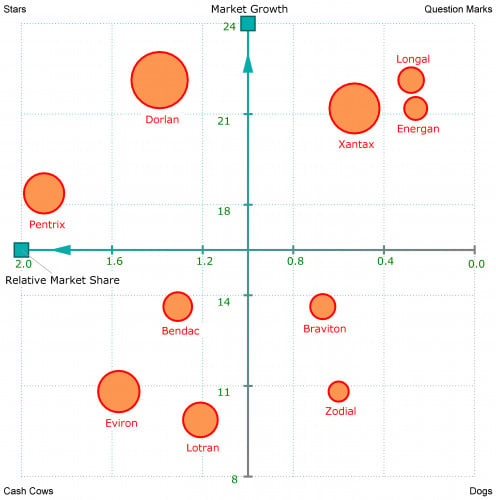- HubPages»
- Business and Employment»
- Small Businesses & Entrepreneurs»
- Marketing for Small Business
Marketing Planning: A Beginner's Approach

Marketing's Role in the Strategic Planning Process
The marketing planning process makes both strategic and tactical plans that will help a company compete, successfully, in the market it serves. Marketing planning actually begins with development of an overall strategic business plan that responds to questions about a company's:
- Mission: What is the company's reason for existing? What is the overall business philosophy (stated in qualitative terms)?
- Situational Analysis: Where are we now? What primary factors, internal and external, is the company faced with that will affect its ability to fulfill its mission?
- Organizational Objectives: Where do we want to be? How will management help to guide the organization toward fulfillment of its mission (stated in quantitative terms)?
- Strategies for Achieving Organizational Objectives: What ideas will be implemented for the purpose of meeting objectives and fulfilling the mission?
Managing the marketing process requires developing strategic plans, developing marketing plans, analyzing product/service potential, carrying out plans, evaluating results, and, finally, taking corrective actions as needed. And it all begins with planning.

Managing Marketing Planning
Managing the marketing function begins with a complete analysis of the company’s situation. The company must analyze its markets and marketing environment to find attractive opportunities and to try to avoid environmental threats. It must analyze company strengths and weaknesses as well as current and possible marketing actions so that it can determine which opportunities it can best pursue.
Marketing planning involves making decisions about marketing strategies that will help the company attain its overall strategic objectives. A detailed marketing plan is needed for each business, product, or brand. A marketing strategy consists of specific strategies, target markets, positioning, the marketing mix, and marketing expenditure levels.
The company’s mission needs to be turned into detailed supporting objectives for each level of management. The mission leads to a hierarchy of objectives, including business objectives and marketing objectives. Marketing strategies and programs must be developed to support the marketing objectives that are defined in the company’s strategic plan.

Designing/Developing/Revising the Business Portfolio
A business portfolio is the collection of businesses and products that make up the company. The best portfolio is the one that best fits the company’s strengths and weaknesses as they are related to opportunities in the environment. Designing the business portfolio involves finding businesses and products the company should consider for the future. Marketing has the main responsibility for achieving profitable growth for the company. Marketing must identify, evaluate, and select market opportunities and it must develop strategies for capturing them.
Market penetration involves making more sales to current customers without changing the company’s products. Market development involves identifying and developing new markets for its current products. Product development is offering modified or new products to current markets. Diversification is where a company starts up or buys businesses outside of its current products and markets. When warranted, companies also develop strategies for downsizing their businesses.
Where a company decides to place its marketing cash investments is part of business portfolio analysis and planning. This is where management evaluates, as a strategic business unit (SBU) the products and businesses making up the company. Each strategic business unit has a separate mission and objectives that can be planned independently from other company products/businesses.
In the process of business portfolio analysis, management must assess the attractiveness of its various SBUs and decide how much support each deserves. Most standard portfolio-analysis methods evaluate SBUs on two important dimensions—the attractiveness of the SBU’s market or industry and the strength of the SBU’s position in that market or industry.
The best known portfolio-planning method was developed by the Boston Consulting Group (BCG). It uses a growth-share matrix approach (discussed in next section). It defines four types of SBUs: stars, cash cows, question marks, and dogs.


The BCG Matrix: Dogs, Question Marks, Stars, and Cash Cows
Dogs
Dogs are SBUs that have low market share and a low growth rate. They don't consume a lot of company cash, but they don't generate a lot of it either. The potential for future business is so low that it's risky to keep investing money in this SBU, and they are strong contenders for divestiture.
Question Marks
These SBUs have low market share, but they are growing rapidly. Companies have to analyze them carefully to determine whether it might pay off to invest the company cash that's needed to grow this SBU's market share. The question mark is a "problem child," not generating much cash but consuming large amounts of company money. The question mark's future can go one of two ways. Once market growth rate declines, it has the potential to gain market share and become a star, and eventually a cash cow. But, after consuming large amounts of cash for a long time, if the question mark doesn't become a market leader, it will become a dog.
Stars
A diversified portfolio should always contain Stars. These SBU's have strong relative market share allowing them to generate large amounts of cash. But, because of their growth rate, they also consume large amounts of cash. If it maintains market share, once its growth rate declines, a star will become a cash cow.

Cash Cows
These SBU's are leaders in a mature market with a stable cash flow. They generate more cash than they consume, and represent opportunities for the company to "milk" them for profit while investing only minimal amounts of cash in them. The return on cash cows is greater than the market growth rate. This SBU earns the cash that is needed to turn question marks into market leaders, cover the company's administrative costs, fund research and development, service debt, and pay dividends to company shareholders.
Once it has classified its SBUs, the company must determine what role each will play in the corporate future. After taking a close look at each strategic business unit the company may decide to:
- Invest more in the business unit in order to grow its share.
- Invest just enough to hold the SBU’s share at the current level.
- Harvest the SBU, milking its short-term cash flow regardless of the long-term effect.
- Divest the SBU by selling it or phasing it out and using resources elsewhere.
Portfolio-analysis approaches have their limitations. They can be difficult, time-consuming, and costly to implement. Often, management finds it difficult to define SBUs and to measure market share and growth. Therefore, approaches focused on classifying current businesses often provide little advice for future planning.
Because of such problems, many companies have dropped formal matrix planning methods in favor of more customized approaches that are better suited to their specific situations.
Within each business unit, more detailed planning takes place with major functional departments in each unit working together to accomplish strategic objectives. Marketing provides a guiding philosophy to keep company strategy revolving around the building of profitable relationships with important customer groups.
Marketing input into strategic planning helps companies identify attractive market opportunities by assessing company potential to take advantage of them. Marketing defines strategies for reaching the company's objectives for each of its SBUs.

The most important question a company needs to answer in terms of marketing planning strategy, however, is one that will affect all of its other planning processes--strategic and tactical. And that question is, “What customers will we serve?”
The answer to this question will be based on which segment of the consumer population the company's products or services are primarily designed to serve. Any product or service should be developed with its primary consumer market in mind. The process of selecting a market segment to serve is known as market segmentation (separating groups to determine who will be served and how).
The second marketing planning strategy question is “How can we best serve our targeted customers?” This question is related to product differentiation (showcasing the primary differences between products) and product positioning (how consumers view a product/service as compared to competitive offerings). The most important step in the marketing process involves building value-laden, profitable relationships with target customers.
When the company knows the answer to the two questions posed above, much of its marketing strategy has already been decided. The company is now in a position to construct a marketing program consisting of the four marketing mix elements-- the 4Ps (specific determinations and recommendations with regard to product, price, place/distribution, and promotion).
The Author
Dr. Middlebrook is a former college professor of marketing and mass communications. She spent nearly twenty years behind the desk teaching courses in advertising, marketing, public relations, and journalism. In addition, she worked, for many years, as a consultant and as an employee in corporate marketing and communications.
© 2012 Sallie B Middlebrook PhD








